Reclaimed materials have antique charm, especially reclaimed bricks, because their age shows their history. Dings, small pockmarks, rough edges and faded stains and paints all make for a beautifully aged set of bricks. Using reclaimed bricks instead of new bricks brings a uniquely rustic and historic look to paving, which helps make new construction and renovation projects feel more textured. Read on for more about the best types of reclaimed bricks and how to use them in the garden.
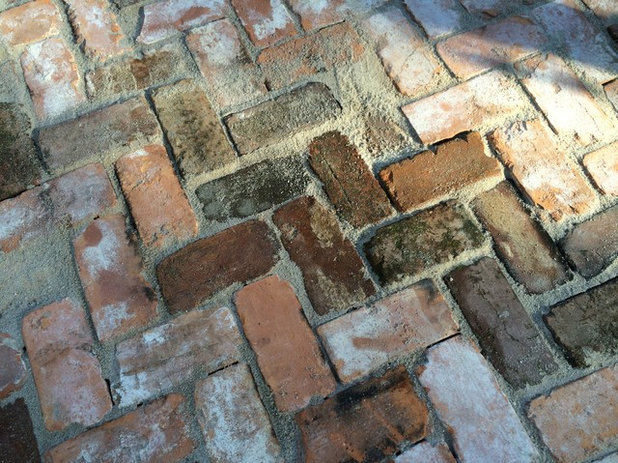
Sunshine Hardscape, Landscape and Nursery
The basics. Bricks are a classic modular paving type and a historic building material made of clay, sand, water, minerals and other materials local to where they are manufactured. Bricks are formed using molds, then baked or dried in a kiln and hardened. There are all sorts of brick types, but street bricks and common bricks are the longest lasting and most suitable bricks for reclaiming.
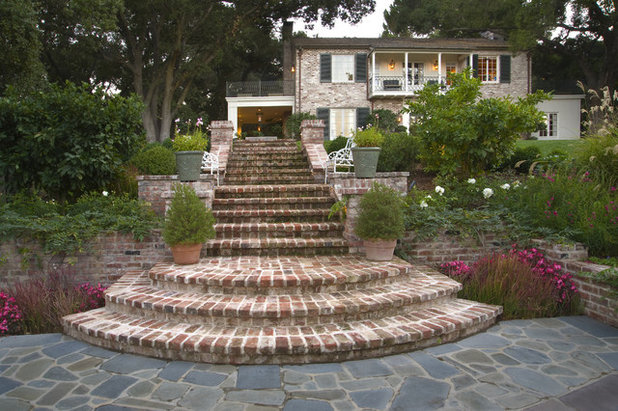
Kikuchi + Kankel Design Group
Street brick versus common brick. Street brick, also called paving brick, has been reclaimed from old streets and can withstand freeze-thaw cycles as well as vehicle traffic, because it has been cured to be harder and does not absorb moisture like common brick.
Common brick, also called face brick, absorbs more moisture, making it unsuitable as paving in cold climates. Freeze-thaw cycles will actually make common brick crumble over time if it is used as paving. A reclaimed-brick supplier will clearly label and identify bricks as the common or paving type.
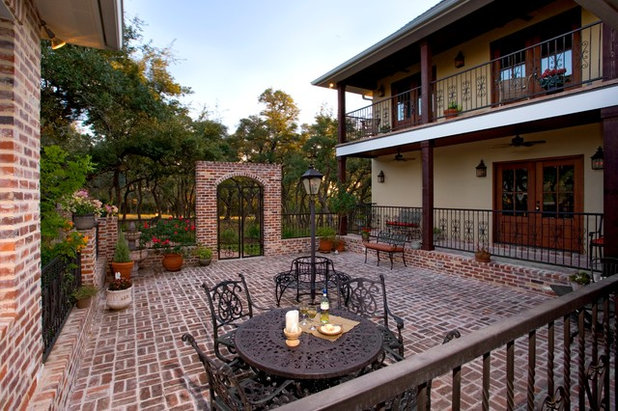
Godsey Homes
Cost. Expect to pay $6 to $15 per square foot for reclaimed brick, depending on the type. Older “antique” paving may fetch a much higher price. Reclaimed brick can be purchased stacked by the pallet from stone, paver and hardscape suppliers.
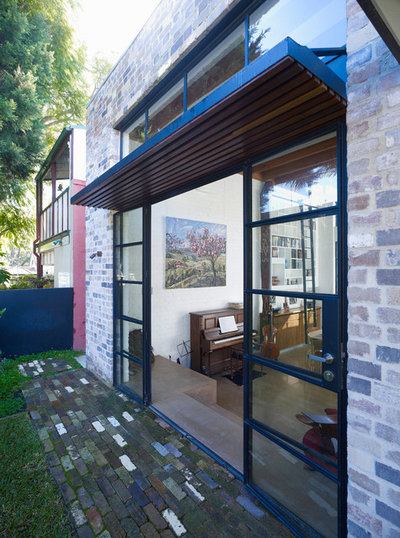
Sam Crawford Architects
Where to find reclaimed brick. In the U.S. it is easier to find historic brick locally when you live in an older city. However, brick reclamation companies will ship pallets of reclaimed bricks to you. That’s obviously a more expensive option, when a single brick weighs about 4 pounds and a full pallet has to be shipped via freight delivery. Try local sources first by looking in these places:
- Your municipality’s building material reuse facility.
- Architectural salvage shops may occasionally have reclaimed brick in variable quantities.
- Local contractors often have leads on sourcing reclaimed brick. Of course, you’ll need to hire that contractor for installation if you go that route.
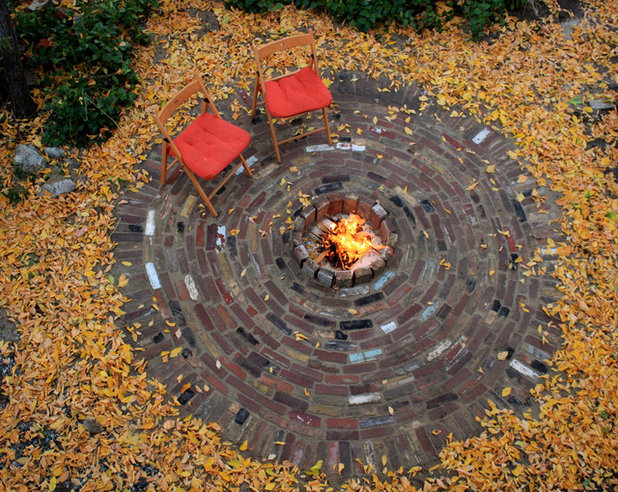
Kingbird Design LLC
What makes it sustainable. Reclaimed brick, like reclaimed wood, is a great way to reuse an old building material. It gives the product another life instead of sending it to the landfill.
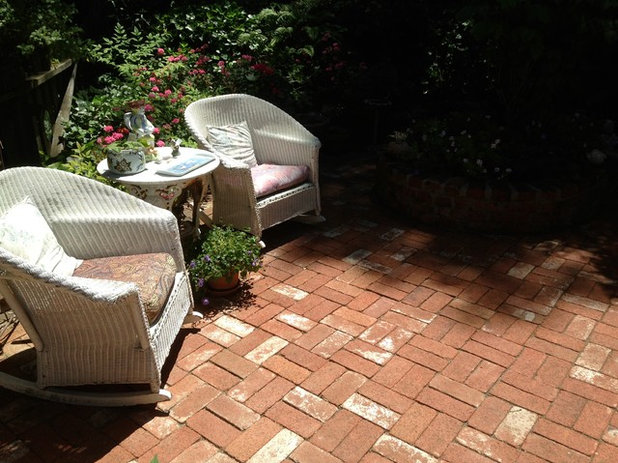
Olivotti Landscape
Design Inspiration for Reclaimed BrickMix color tones. This patio has a nice mix of terra-cotta red bricks with some lighter cream-colored bricks. The white wicker outdoor chairs work nicely with the cream brick accents.
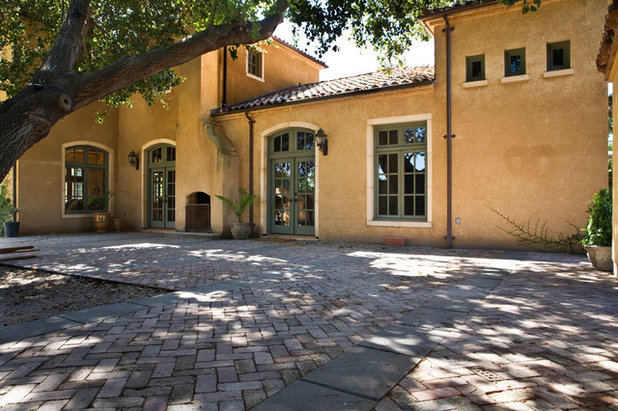
Noel Cross+Architects
Large terraces. This large terrace has deep grayish-red reclaimed bricks from a variety of sources. The brick is laid in a 45-degree herringbone pattern, creating a great look in a large shaded space next to the house.
See more popular brick paving patterns for patios
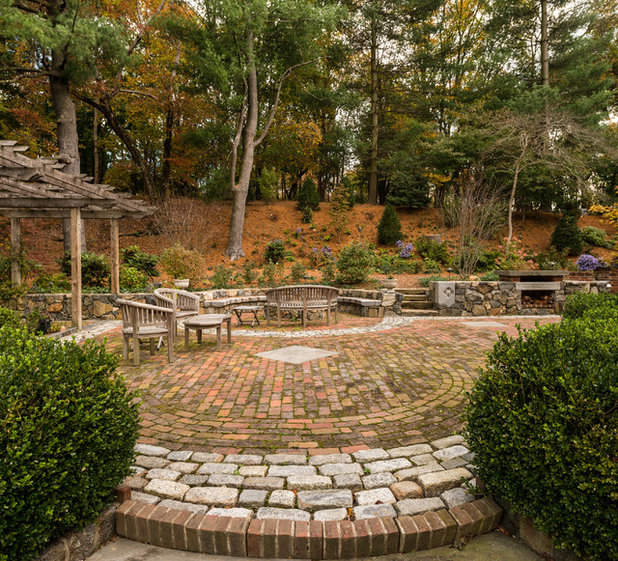
Archer & Buchanan Architecture, Ltd.
Mix reclaimed paving types. Shown here are two kinds of reclaimed modular paving — granite cobblestones and old bricks — combined to create different fields of color but with a consistent old-world patina.
More:6 Ways to Rethink Your Patio Floor
Browse more landscape design ideas on Houzz





